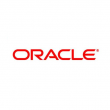Digital transformation in asset management – obstacles for fund administrators
The asset management industry is making a record number of investments into digital transformation – not just money, but time, energy and talent.

Digitalisation is not a matter of “if”, but rather “when” for fund administrators
The digitisation process, however, doesn’t just affect asset managers; many fund administrators need to adhere to industry standards in order to keep pace with their rapidly changing requirements, but are struggling to do so.
Many of these challenges are there largely in part due to legacy back-end systems and procedures that do not always cooperate.
There are several specific challenges that fund administrators identify as key roadblocks in their path to successful digital adoption, and here we’re going to look at these in depth.
Why do fund administrators need to modernise now?
The need for modernisation in fund administration is not new, but the pressure has been building. This has several root causes:
- Growing demand for alternative investment products: There is growing interest in private equity, real estate, infrastructure and private debt investment – all forms of alternative investment products. This demand means that the need for fund administration and accounting services around alternative investment products has accelerated as well, and fund administrators are expected to deliver performance measurement and risk analytics along with consolidated reporting across their investors’ multi-asset portfolios.
- Growing competition in the fund administration business: As the fund administration space becomes more competitive (one study shows that 28% of fund administrators have been fired by their clients in the last 12 months), those with newer and more integrated technologies are considered to have an advantage over their peers.
- Inevitability: Most fund administrators have reached the point where modernisation is not a matter of “if”, but rather “when”. And as the cost of legacy systems and products rises, while newer technologies become ever more affordable, the opportunity cost of not investing in digitalisation reaches a tipping point.
The obstacles facing fund administrators
The primary obstacles tripping up fund administrators when tackling modernisation are:
1. Siloed client and investor data
Fund administrators deal with lots of data, and in older systems much of it is siloed. This increases the risk of duplication, missing data and inaccuracies.
This problem is partially caused by the fact that data management falls under the responsibility of the IT department, which is often not intimately involved in business issues.
“Data management fell into the domain of the IT group, who didn’t understand how it was really used,” says Paul McInnis, head of enterprise data management for BNY Mellon subsidiary Eagle Investment Systems in Boston.
But why are data silos such a problem? Firstly, data silos mean there is no comprehensive or enterprise-wide view of data. This, in turn, leads to a lack of relevant connections between disparate data that can easily be missed.
Here’s an example: say your risk management team wants a firmwide analysis of exposures. A simple enough request – but when data from each individual team or system is stored separately, values from, say, the swaps spreadsheet, may never make it into the risk analysis.
The entire task becomes one of data-hunting, and this leads to mistakes and missed information, meaning proper analysis becomes impossible.
Another reason data silos cause such trouble is that they’re inefficient. The example above is a great one; should compliance employees spend their time manually searching for data in order to do a high-level analysis? How many hours does your firm spend on supporting reporting cycles, ad hoc reporting requests or building manual or macro-based queries?
This isn’t just inefficient, it duplicates human and technical resource costs by managing and storing the same data in multiple locations.
Lastly, when the same information is stored in multiple places, an obvious error can sneak in: inconsistency. How certain are you that the performance and attribution calculations in your portfolio management system match the official numbers published in your client statements or marketing materials? Would you need someone to check to be 100% sure?
The necessity of double-checking that all figures match across all locations is again inefficient and wasteful.
At their worst, data silos put your firm at risk of making decisions based on less than complete information and reporting to clients, management and regulators with incomplete or potentially inaccurate information.
At best, they drive inefficiency and increase processing risk. You may already know of some data silos that your firm is struggling with, and everyone should be on the lookout for more. Once identified, data issues may appear to be ‘fixed’ by tactical tools such as macros, collaboration tools or emails, but these often generate new problems and are still an inefficient solution. It’s time to stop ignoring the risks posed by data silos.
2. Multi-jurisdictional regulatory obligations
In an evolving regulatory landscape, technology leaders at fund administrators must ensure high standards of resilience and asset compliance.
One study shows that more than 50% of fund administrators predict that adapting to regulation changes will be their biggest challenge in the coming years, and nearly 90% are planning investment in systems to keep pace with new regulatory demands.
This overwhelming push for investment in compliance system modernisation should not be a surprise, as regulatory compliance is a fundamental aspect of any investment-based business, and without improvements to legacy systems, the sheer scope of the work would become insurmountable (or at the very least, extremely resource-intensive).
But modernisation does not come cheap, especially for those servicing multiple jurisdictions.
This issue has been at the forefront of the alternative investment industry (and especially the hedge fund industry) for several years now, and despite some industry leaders remaining optimistic about a potential loosening of regulations, reality shows that the trend towards transparency is likely to grow.
Fund administrators must remain ahead of the game by adopting technology that allows them to efficiently and quickly adapt to changing regulatory environments across multiple jurisdictions, or risk falling foul of the letter of the law.
3. Cost pressures
Lastly, fund administration firms must remain competitive on price while servicing the increasing demands of their clients and investors.
The industry is simply too crowded to allow room for inefficiency, inaccuracy or high costs. Since just 2008, the industry has grown to $12 billion, with an estimated 500 fund administrators in the US alone, and asset managers who outsource their fund administration needs (and 81% of hedge fund managers do) are not afraid to churn through providers.
The simple fact is that companies who adopt digital technologies can perform more accurately, more efficiently and more cheaply than their competitors, and fund administrators maintaining legacy systems are simply unable to compete. But transformation must happen quickly and smoothly in order for administration firms to secure their client base.
Conclusion
Although digital transformation is not an easy path for fund administrators, it is an inevitability.
Fund administration is a very fragmented and competitive business. Often, the biggest competitive advantage that an administrator can offer to its clients is technology.
Fund administrators are continuously seeking to provide an evolving array of value-added services. Four or five years ago, all an administrator was expected to do was calculate month-end NAV, while hedge fund managers looked to their prime brokers for portfolio reporting, risk-management and performance attribution systems.
This is significantly changing today, and without the right technology it is impossible to stay competitive.











































